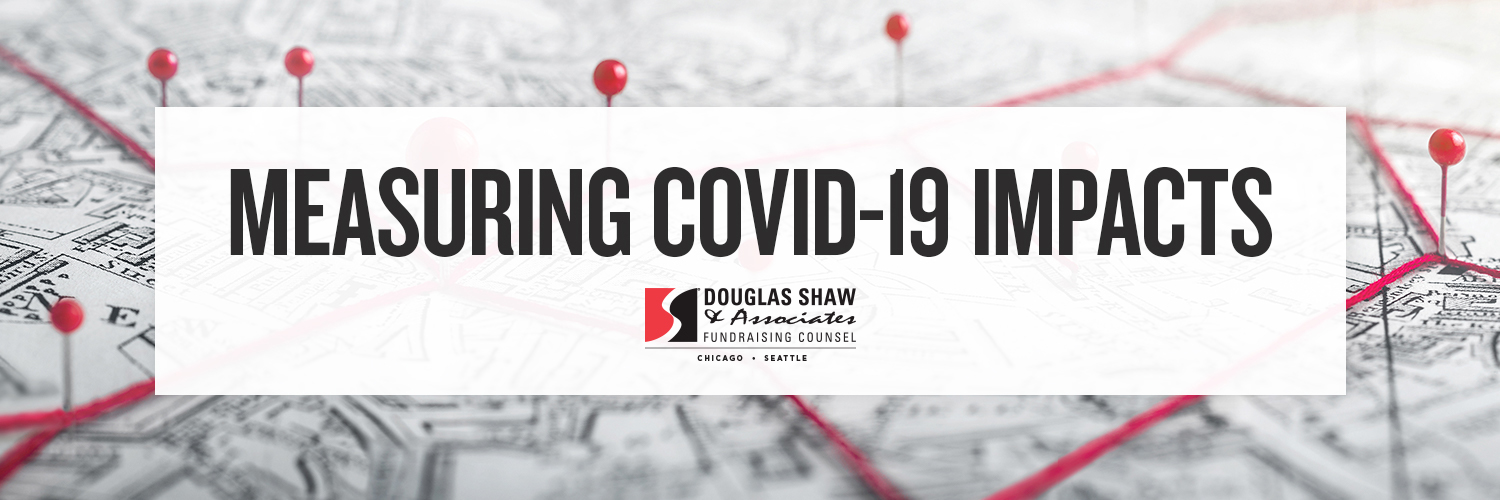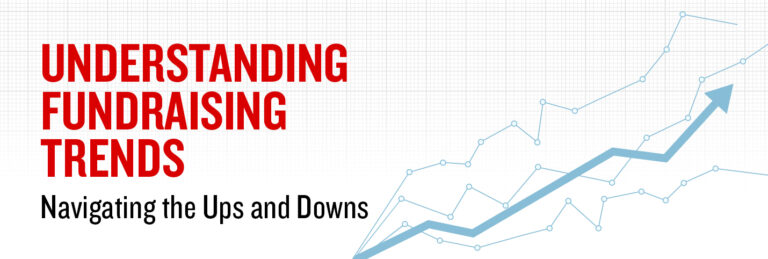Measuring COVID-19 Impacts
COVID-19 has affected all of us profoundly. It changed the way we serve the public, interact with coworkers, and even the way we fundraise. So, as we seek to learn from the data, how do we measure the impact of COVID-19 on our fundraising programs?
Here is one way for you to calculate an approximate impact of the pandemic on your 2020 numbers.
SET A BASELINE
To get a sense of the impact of COVID-19 across your organization’s fundraising efforts, first, break your revenue down across the different sources. Every organization will have unique sources, but some of the key ones are: direct mail, website, email, events, and acquisition. Then, break out a COVID-to-date value (March to December) across at least a three-year period—the longer the better. Here’s a sample:
The red bar represents March through December in 2020, and the blue bars represent March through December revenue in the six preceding years across each communication platform. You can visually see the difference between other years and this year, but this will only tell you how it compared to last year—not how it compares to what might have happened in the absence of the pandemic.
CALCULATE WHAT MIGHT HAVE HAPPENED
Now that we know what’s happened since the beginning of COVID–19, we need to determine what revenue we might have received if we weren’t hit with a global pandemic. This can be done by running a linear forecast in Excel—or, feel free to go to douglasshaw.com/COVIDImpact to punch in your numbers.
In the case from the sample chart, we built the following values:
Simply subtracting the projected 2020 value from the actual 2020 value gives us a fair estimate for the true impact of COVID-19 on the numbers so far. This accounts for the natural growth or retraction in each category based on the established trend and allows us to determine the incremental effect of the pandemic.
As you can see in the example above, this particular organization was the beneficiary of an outpouring of support from their donors. The increase was most notably in the direct mail and website channels, but even their monthly donors gave above and beyond their previous commitments. Of course, without the ability to have in-person events, that revenue channel has decreased by almost $1.2 million.
With these values in hand, you are in a much better position to begin making decisions about how to approach your fundraising campaigns in 2021 and beyond. You will have a better understanding of your holistic number and what areas you will need to increase in order to make up any deficits. And ultimately, you can see that your donors should always be a key focus in your planning.
Related articles
-

More Than Just Work
As a young Christian professional navigating the conundrum of aligning my beliefs into a purposeful career, I’ve been blessed to…
-

What to Think of Artificial Intelligence and Its Impact on Fundraising . . .
In trying to summon an image to represent our theme for this issue of Donor Focus, I found myself drawn…







